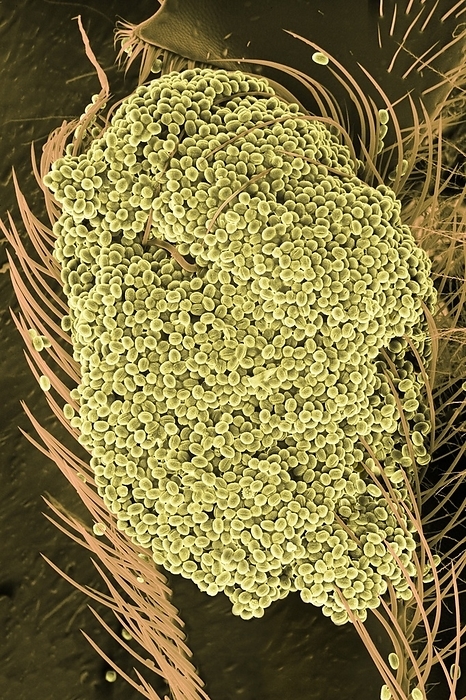
RM
A loaded pollen basket of a foraging bee
Scanning electron micrograph of the pollen basket of a bee. The picture shows the pollen basket on the hind leg of a bee. The "basket" consists of paired rows of incurving hairs, that hold in place pollen grains captured by scattered hairs on the body of the insect as it forages. The grains are transferred to the basket by a series of complex movements of the legs. The species of bee is uncertain, but the loose packing of the grains shows that it is not a honey bee, Apis mellifera, nor a bumblebee, Bombus spp. These glue the pollen grains together with saliva before moving it to their baskets. Some species of solitary bees also do this, but others do not. The pollen grains all appear identical, except for two (below centre), that are spherical and have spines. This may imply loyalty by this bee to a plant species, if only for the foraging trip during which it was captured., Creditline:DR JEREMY BURGESS/SCIENCE PHOTO LIBRARY

More
Top Categories
